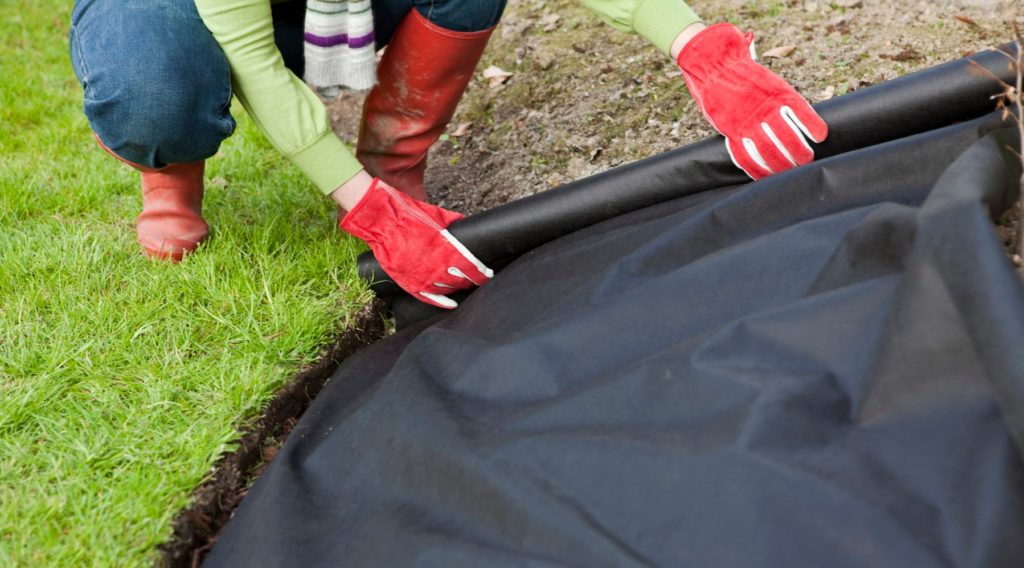
Fall Mulching is one of the easiest, quickest, and most cost-effective things you can do to protect your trees through these upcoming cold months. Although mulch can be applied year-round, Fall is a critical time for mulching. Fall mulching helps increase moisture retention, insulate the soil, protect the tree’s roots from the cold, and suppress winter weeds. Properly mulching your tree this fall will help give your tree a leg up this winter and into next spring. Read on to learn our 8 Fall Mulching tips
1. Mulch 2-4 Inches Deep
Your mulch should be about 2-4 inches deep. Most mulching you see probably is a lot deeper than this, as over-mulching is one of the most common mulching mistakes. It’s become a common industry practice for landscapers to pack 6-12 inches of mulch up around the base of the tree in order to make their customers happy; however, this over-mulching is very bad for your tree and can lead to many issues such as girdling root systems and root rot. If you want to receive all the benefits of mulching without the dangers of over mulching, make sure your mulch is only 2-4 inches deep!
2. Don’t Cover The Root Flare: AKA No Mulch Volcanoes!
Do not pile the mulch against the trunk of the tree like a mulch volcano. Instead, keep it away from the trunk so that the root flare zone is visible. When you pile up mulch over the root flare and against the trunk it can severely hurt the tree. When mulch actually touches the tree, as it does in mulch volcanoes, moisture is trapped and penetrates the bark suffocating the cells that transfer food throughout the tree. This moisture is also a breeding ground for rot, tree insects, and disease. Mulch volcanoes can also keep water from reaching the roots of the tree (where water is needed).

3. Mulch Out As Far As The Canopy Goes
The best mulching goes out as far as the tree’s canopy (referred to as the drip line of the tree). Mulching this far out covers the entirety of the tree’s critical root zone and helps it stay insulated during the cold fall and winter months. However, this isn’t realistic for most homeowners because 1) they don’t like the aesthetics of this and 2) for small properties with big trees, the tree canopies may extend into their neighbor’s yard or take up the majority of their property leaving no room for grass.
If mulching out as far as the canopy extends isn’t practical, our Arborists suggest applying mulch in a 2 to 3-foot radius around the tree instead.

4. Avoid Mulch Touching Your House
Mulch is great for retaining moisture but unlike soil, house foundations don’t like moisture. If your mulch touches the brick/siding of your home it could cause issues with your foundation over time. In cases where trees or shrubs are close to your home, it’s best to leave a few inches between your mulch bed and your house to protect your foundation.
5. Don’t Use Fresh Wood Chips On Young Trees
Do not use fresh wood chips for mulching around young trees. Fresh wood chips have a higher acidity which can alter the pH of the soil and can injury young trees. Since wood chips only alter the acidity a few inches deep into the soil, using them on older trees with well established deep root systems is not an issue.
6. Don’t Use Plastic or Fabric Weed Barriers
Many homeowners have been taught to lay down plastic or fabric tarps before mulching to keep the weeds away. Unfortunately, these don’t work as intended and can even have some negative side effects. These weed barriers can end up strangling plants and shrubs as they try to grow and negating the aeration benefit of mulch that reduces soil compaction. Instead, forego the weed barriers this year. Proper mulching itself will help keep out weeds.

7. Make Sure You Know What’s In Your Mulch
Many waste departments and landfills offer free or cheap mulch, which can be very tempting for homeowners wanting to keep their costs down. But beware of free or cheap mulch that comes from city waste departments. These types of mulch can contain pesticides, dangerous tree diseases or pests, or even weed seeds. Instead make sure you know what goes into making your mulch and buy from a trustworthy source, like a local nursery.
8. It’s Never Too Late To Mulch
This time of year is perfect for fall mulching but if you end up procrastinating or your busy schedule gets in the way, don’t worry. It’s never too late to mulch. Even if you forget to mulch before the first frost or notice you’re halfway through January and still haven’t mulched you can still put mulch down. Unfortunately, the effect of mulch isn’t retroactive so if damage has been done mulching won’t fix it; however, in the case of mulching laying down mulch for part of the season is better than nothing.
Now that you’ve read our 8 Fall Mulching Tips you’re ready to get mulching this weekend! And don’t forget there are other steps you can take to prepare your trees for winter, just check out our 5 Most Important Fall Tree Care Tips blog post. If you need help with your trees this fall give us a call at 703-573-3029 or book a consult online.


